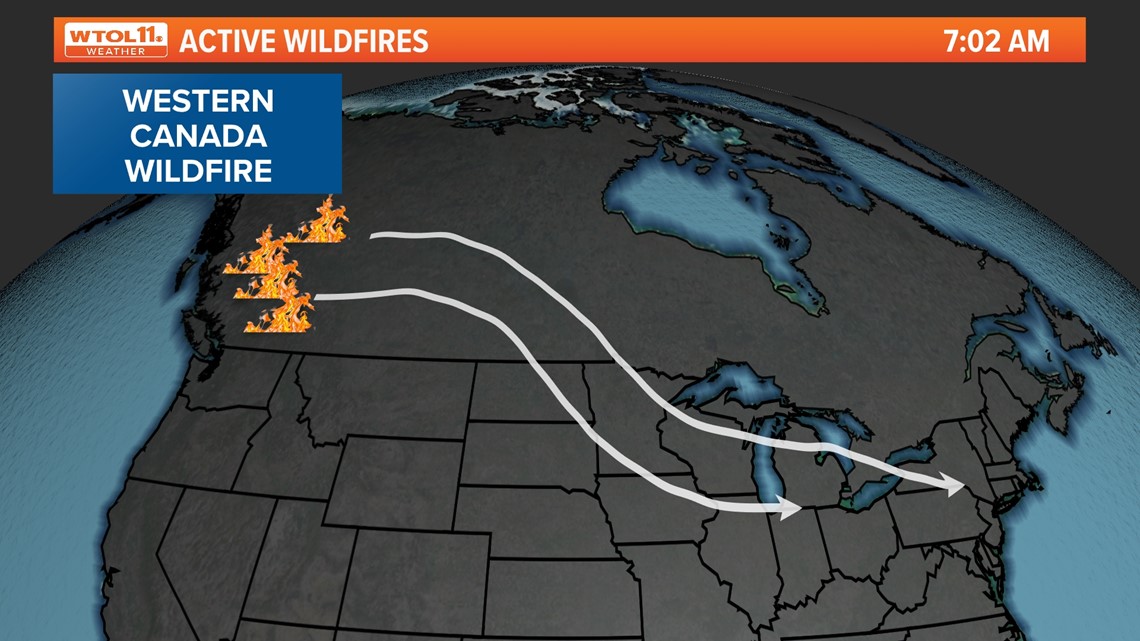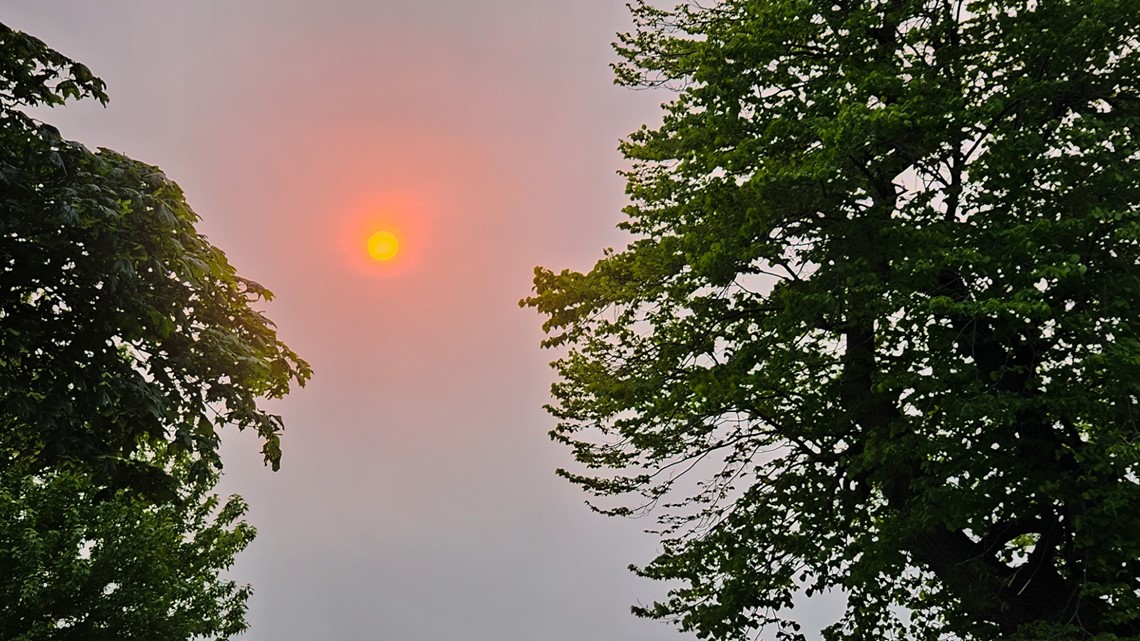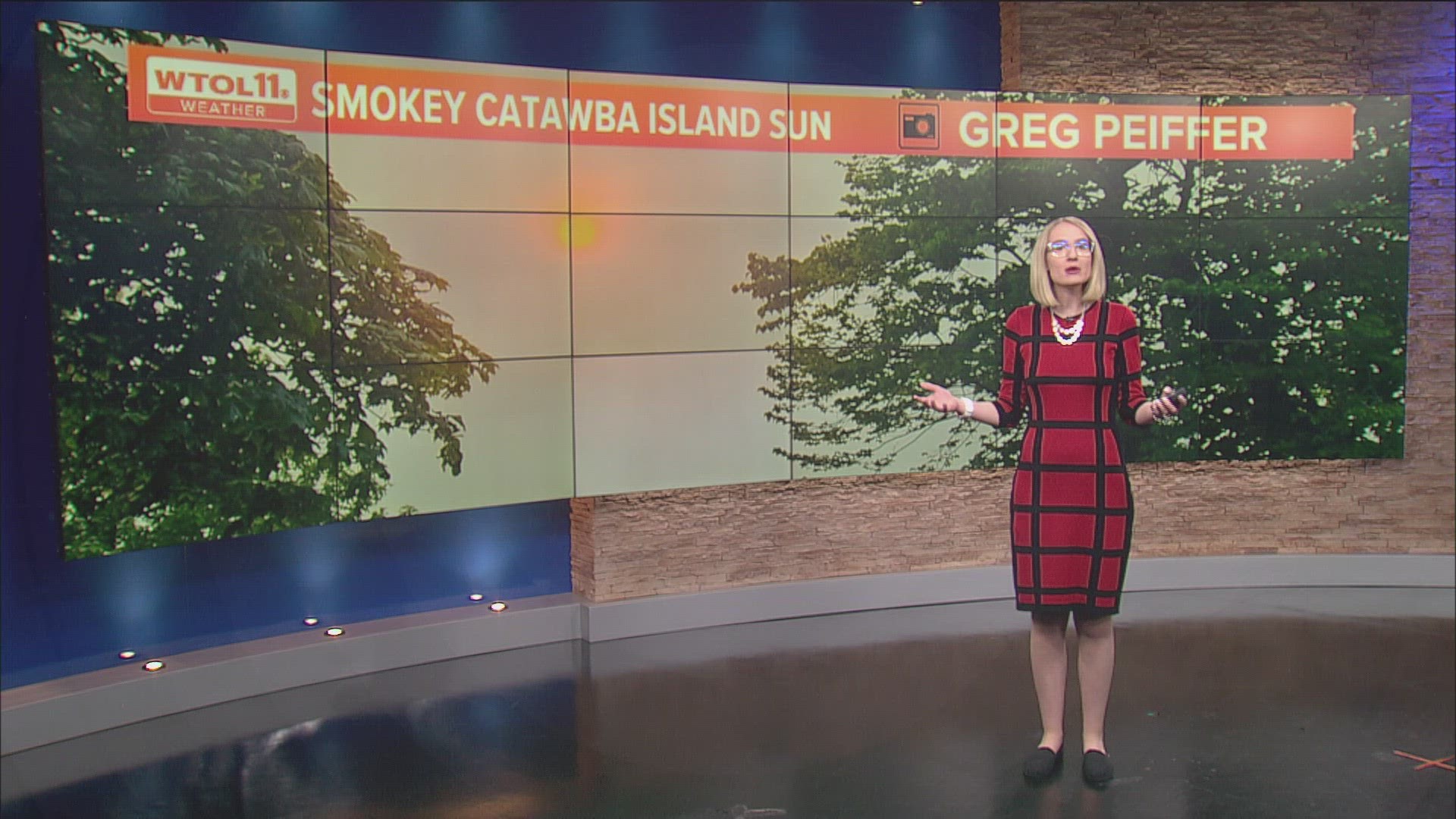TOLEDO, Ohio — You may have noticed the sunset looked somewhat redder and smokier Tuesday evening. There is a reason behind the evening spectacle, which you can catch again Wednesday evening, and it can be explained with the physics of the atmosphere, the weather and how the human eye perceives light.
Smoke from wildfires burning on the western coast of Canada traveled eastward towards the Midwest, brought by winds and a cold front that moved from the north into the Great Lakes region. Although they're too high in the atmosphere to be a breathing hazard, smoke and ash particles affect what wavelength of light is visible to the human eye.


Sunlight travels at certain wavelengths and the human eye interprets each of these wavelengths as specific colors. At sunset, the angle of the Sun with respect to the Earth means light has to travel a further distance to reach our eyes; the color red is represented by a longer light wavelength, which is why sunsets appear more colorful than sunlight at noon.
When you mix smoke and dust into the atmosphere, they exaggerate this phenomenon by blocking out shorter wavelengths, like blues and greens. This allows the longer wavelengths - red, orange and fuchsia light - to appear more vivid.
WTOL 11 viewer Greg Peiffer took this photo of the sunset over Catawba Island Tuesday evening.


If you catch a beautiful sunset, be sure to snap a photo of it and send it to the WTOL 11 Weather Team and Newsroom. On the WTOL 11 app, tap "Near Me" in the lower right-hand corner. Then press the orange "Share with Us" button in the upper left-hand corner of the map.
MORE FROM WTOL 11

